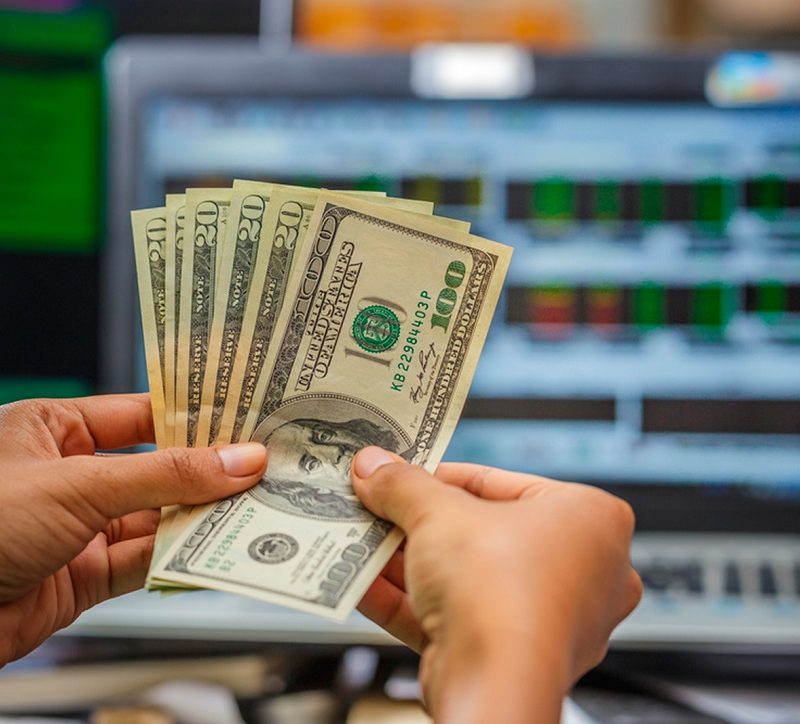Michelle Kajikawa of Portland and her husband currently owe more than $150,000 in student loans from his law degree and her social work and teaching degrees, obtained between 1995 and 2003. She is an elementary school teacher, and her husband works as a public defender, while caring for two children.
“The yoke of student debt has completely overshadowed every aspect of our finances,” said Kajikawa. “We have always lived paycheck to paycheck, even as our salaries grew.”
Millions of unemployed in US face hardship under Republican benefit cutsRead more
The couple relied on assistance from family to buy a home, because their debt-to-income ratio prevented them from qualifying for a mortgage. Their credit suffers regularly when hit with unexpected bills, mostly for medical care. Now the couple is starting to worry about putting their two children through college while wondering how they will be able to afford to eventually retire, especially when their federal student loan payments have to start being paid again after the Covid-19 pause on federal student loan payments expires on 30 September.
“There is a psychological cost to this unshakable burden. We are facing having to put our own children through college, and eventually our own retirement, all with the burden of $1,500 to $2,000 payments every month, seemingly forever. We internalize a feeling of failure, even though we have accomplished a lot, personally and professionally,” added Kajikawa. “I am dreading the point at which we will start paying again.”
Student loan borrowers are awaiting relief from the Biden administration amid calls to cancel $50,000 in federal student loan debt from Democratic members of Congress, though Biden has only expressed support for $10,000 in student debt forgiveness.
His administration also omitted student debt cancellation from the annual White House budget while awaiting a report from the US Department of Justice and US Department of Education reviewing Biden’s legal authority to cancel student loans through executive action.
For many Americans hit by student debt the lack of immediate action from Biden has been a serious blow, especially as payments on those loans are set to start again for many people.
“It is a catastrophically failed lending system at this point by any rational metric you can come up with,” said Alan Collinge, founder and organizer with Student Loan Justice, which has circulated a petition with more than 1m signatures calling on Biden to cancel all federal student loans and grant bankruptcy rights for private student loans.
It is a catastrophically failed lending system at this point by any rational metric you can come up withAlan Collinge
“This pandemic is the nail in the coffin,” added Collinge. “Almost nobody has been paying on their loans for the past year and whenever the repayment suspension is lifted, if you think many people are going to resume, you’re wrong. It’s not going to happen – people have gotten used to seeing the extra money in their bank account at the end of every month and they’re done.”
During the pandemic, student loan balances have continued to increase despite a federal loan payment pause. In the first quarter of 2021, student loan balances in the US increased by $29bn to $1.73tn. Around 43.2 million Americans owe an average of $39,351 each in student loan debt.
Kim Schmitt of Easthampton, Massachusetts, originally owed $12,000 in student loans after attending three years of school, but defaulted because she couldn’t afford the repayment amount.
“When I was in default, the student loans started taking my tax refunds, even though I had kids, and was on food stamps and state health insurance,” said Schmitt. “Over the years they took roughly $50,000 in tax refunds, but my balance only went up because of fees and interest.”
She was eventually able to enter an income-based repayment plan and loan forgiveness program because she works as an educator for elementary school students with autism. The high costs have deterred her from finishing her bachelor’s degree and obtaining a master’s degree to be able to make more money in her field. Schmitt still owes $31,000 in student loan debt, while caring for two children as a single mother since her husband died of cancer.
“I owe too much in student loans to qualify for more and the price of a year’s worth of classes is astronomical, so I’m just kind of stuck here,” added Schmitt.
First generation college students are twice as likely to report falling behind on student loan payments. 3.3 million student loan borrowers under the age of 40 are behind on student loan payments. Student debt disproportionately impacts women and Black students: 58% of all student debt belongs to women while 30% of Black student loan borrowers default within the first 12 years of repayment.
Black college graduates owe an average of $25,000 more in student loans than white college graduates. About 20 years after taking out student loans, the median Black borrower owes 95% of their debt, while the median white borrower has paid off 94% of their debt.
Stephen Jansen of Milwaukee graduated with over $100,000 in student debt from undergraduate and graduate school in 2016, and struggled to find work in his field of public administration. When he was able to find a job, the University of Wisconsin would not release his transcripts required for the job over student debt.
“If a student gets to pay back their loans, they’re going to need to have a job. So why would you withhold transcripts to keep them from getting a job?” said Jansen.
He wrote a letter to his university and the board of regents requesting the transcripts, insisting the policy should be changed, and outlining the data of disproportionate burden of student debt on Black college graduates such as himself, to no avail until the university released the transcript after being contacted by the Wisconsin senator Tammy Baldwin’s office. He said the delay in resolving the issue cost him job opportunities.
Jensen is now concerned that once the pause on federal student loan payments is lifted, the impact on Americans who are struggling with debt accrued due to the coronavirus pandemic will be severe.
“You have people who are burdened by debt as a result of the pandemic. We’re now going to be double burdened by the student loans being allowed again,” he added.
As student debt has more than doubled over the past decade, public investment in higher education has declined despite increasing college tuition costs. State investment per student in higher education across the US has decreased by more than $2,000 between 1987 to 2018, with inflation taken into account, despite average tuition at public four-year institutions increasing by 213% during the same time period.
“I have $160,000 and counting, and can’t pay it,” said Patrick Casale, a clinical mental health therapist in Asheville, North Carolina. His monthly payments are $2,900, and has relied on applying for temporary income-based reduction, while worrying if his applications aren’t approved, his wages will be garnished. “If the income-reduced plan runs out, I don’t see another alternative. Considering moving out of the country has certainly crossed my mind many times.”
Heather Taylor moved with her husband from Oregon to France, where they both work as teachers, and doesn’t see moving back to the US as a viable option – in part due to the high costs of her student loans.
“Since I live abroad, my income-driven repayments for my student loans will stay at zero unless I earn more than $100,000 a year, which as a teacher is highly unlikely. However, my student loans of $70,000 will continue to climb. That means that I can afford to live as long as I stay here, but that I’ll never be able to afford to live in the United States again,” said Taylor.
“These loans are designed to keep people in poverty.”




